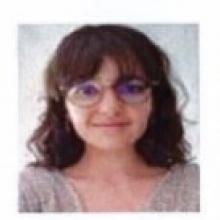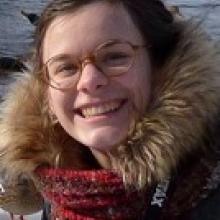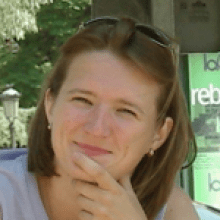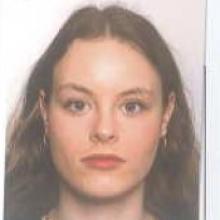Evolutionary Genetics of Interactions Group
Members

Ingénieur d'études CDD
CNRS

Maître de conférences
UCBL
Tel: 04 72 43 29 16
Post-doc
CNRS

Chargé de recherche
CNRS
Tel: 33 04 72 43 29 12

Maîtresse de conférence universitaire
UCBL
Tel: 04 72 43 29 16

Professeur des universités
UCBL

Doctorante
CNRS
Tel: 04 72 44 81 42

Chargée de recherche
CNRS
Tel: 33 04 72 44 81 01

Doctorante
INSA
Tel: 04 72 44 81 42

Maîtresse de conférences
UCBL
Tel: 04 72 43 29 10

Doctorante
UCBL
Tel: 04 72 44 81 42
Doctorante
UCBL
Doctorante
UCBL
Assistante ingénieure CDD
UCBL

Technicien CDD
UCBL

Maître de conférence universitaire
UCBL
Tel: 33 04 72 44 81 01

Directeur de recherche
CNRS
Tel: 33 04 72 43 19 21

Professeure des universités
UCBL
Tel: 33 04 72 44 82 16
Professeur des universités
VetAgro-Sup
Tel: 33 04 78 87 27 02
Living systems are made up of a multitude of interlocking levels of organization, involving cooperation and conflict. Cooperation and the selection of systems operating in a coordinated manner has allowed so-called "major" evolutionary transitions, towards new scales of individuality, such as the eukaryotic cell. Nevertheless, natural selection continues to operate at all scales, generating possible evolutionary conflicts between the different components of the individual.
Our research is in line with this perspective, and aims to better understand the nature and evolutionary implications of the interactions between the multiple components of organisms, from genes to symbiotic bacteria, viruses and transposable elements. We also explore the impact of these interactions on the dynamics of genetic information, through horizontal transfer, or on genetic innovation and adaptation, through domestication. Our research, mainly experimental, but also theoretical, is implemented on arthropod models, and is mainly related to genetics and evolutionary genomics.
The team is structured along two main axis:
- Intragenomic interactions: transposable elements (resp. Marie Fablet)
Ex1: The evolutionary dynamics of transposable elements (TEs) in genomes, in relation to their natural variability. Our models include natural populations of Drosophila melanogaster and D. simulans, as well as species of agronomic or societal interest, such as the invasive species D. suzukii or the tiger mosquito Aedes albopictus.
Ex2: Interactions between ET control and anti-viral immunity. We are studying the molecular mechanisms of RNA interference at the origin of the entanglement of these two processes, as well as the co-evolutionary implications, using experimental infections of different viruses on several Drosophila lines.
People involved : CV, MB, MF
- Symbiosis, the driving force of evolution (resp. Natacha Kremer)
Ex1 : Certain symbiotic bacteria provide metabolic capacities that the insect lacks. We are analysing these interactions in haematophagous insects (bedbugs, ticks) and phytophagous insects (the whitefly Bemisia tabaci) using approaches combining phenotype analysis, genetics, physiology and metabolomics.
Ex2: Parasitoid insects have domesticated viral genes enabling them to bypass the immune responses of their hosts. We are studying the frequency and adaptive significance of these events and, more generally, looking into the factors structuring horizontal transfers in host-parasitoid communities.
People involved: NK, LM, LZ, JMD, JV, FV, SC
Publications
Display of 211 to 240 publications on 392 in total
Biotype status and resistance to neonicotinoids and carbosulfan in Bemisia tabaci (Hemiptera: Aleyrodidae) in Burkina Faso, West Africa
International Journal of Pest Management . 59 ( 2 ) : 95-102
Journal article
see the publicationMolecular characterization of genetic diversity within the Africa/Middle East/Asia Minor and Sub-Saharan African groups of the Bemisia tabaci species complex
International Journal of Pest Management . 59 ( 4 ) : 329 - 338
Journal article
see the publicationMaternally deposited germline piRNAs silence the tirant retrotransposon in somatic cells
EMBO Reports . 14 ( 5 ) : 458-64
Journal article
see the publicationThe first engagement of partners in the Euprymna scolopes - Vibrio fischeri symbiosis is a two-step process initiated by a few environmental symbiont cells
Environmental Microbiology . : n/a - n/a
Journal article
see the publicationLong PCR : A sensitive PCR protocol for amplification of Wolbachia endosymbiont in Indian honey bees
Journal of Entomological Research . 36 : 119--122
Journal article
see the publicationNew national and regional bryophyte records, 31
Journal of Bryology . 34 ( 2 ) : 123-134
Journal article
see the publicationLevel of protection and testing scheme
Escort 3: Linking non-target Arthropod testing and risk assessment with protection goals . : 16-24
Book chapter
see the publicationA snapshot of histone modifications within transposable elements in Drosophila wild type strains.
PLoS ONE . 7 ( 9 ) : 1-7
Journal article
see the publicationAn inherited virus influences the coexistence of parasitoid species through behaviour manipulation.
Ecology Letters . 15 ( 6 ) : 603-10
Journal article
see the publicationInfluence of the virus LbFV and of Wolbachia in a host-parasitoid interaction.
PLoS ONE . 7 ( 4 ) : 1-10
Journal article
see the publicationHeritable variation in an extended phenotype: the case of a parasitoid manipulated by a virus.
Journal of Evolutionary Biology . 25 ( 1 ) : 54-65
Journal article
see the publicationAn inherited Virus manipulating the behavior of its parasitoid host : epidemiology and evolutionary consequences
Parasitoid Viruses. Symbionts and Pathogens . 978-0-12-384858-1 : 203-214
Book chapter
see the publicationPopulation genetic structure and secondary endosymbionts of Q Bemisia tabaci (Hemiptera: Aleyrodidae) from Greece
Bulletin of Entomological Research . 102 : 353-365
Journal article
see the publicationA comparative analysis of the amounts and dynamics of transposable elements in natural populations of Drosophila melanogaster and Drosophila simulans.
Journal of Environmental Radioactivity . 113 : 83-86
Journal article
see the publicationModulation of Symbiont Lipid A Signaling by Host Alkaline Phosphatases in the Squid-Vibrio Symbiosis
mBio . 3 ( 3 )
Journal article
see the publicationEffects of deltamethrin on the specific discrimination of sex pheromones in two sympatric Trichogramma species
Ecotoxicology and Environmental Safety . 84 : 32--38
Journal article
see the publicationComplete Genome Sequence of "Candidatus Portiera aleyrodidarum" BT-QVLC, an Obligate Symbiont That Supplies Amino Acids and Carotenoids to Bemisia tabaci.
Journal of Bacteriology . 194 ( 23 ) : 6654-6655
DOI: 10.1128/JB.01793-12
Journal article
see the publicationEvolution and control of host-microbe symbiosis in arthropods: an RNAseq-based transcriptomic analysis
7. International Wolbachia conference . 978-2-911320-44-6
Conference paper
see the publicationMaking (good) use of Wolbachia: what the models say.
Current Opinion in Microbiology . 15 ( 3 ) : 263-8
Journal article
see the publicationEvidence of diversity and recombination in Arsenophonus symbionts of the Bemisia tabaci species complex
BMC Microbiology . 12(Suppl 1) : 1-15
Journal article
see the publicationtirant, a newly discovered active endogenous retrovirus in Drosophila simulans.
Journal of Virology . 86 ( 7 ) : 3675-3681
DOI: 10.1128/JVI.07146-11
Journal article
see the publicationInternational Congress on Transposable Elements (ICTE) 2012 in Saint Malo and the sea of TE stories.
Mobile DNA . 3 ( 1 ) : 17
Journal article
see the publicationTransposon proliferation in an asexual parasitoid.
Molecular Ecology . 21 ( 16 ) : 3898-3906
Journal article
see the publicationHigh-resolution melting technology: a new tool for studying the Wolbachia endosymbiont diversity in the field.
Molecular Ecology Resources . 12 ( 1 ) : 75-81
Journal article
see the publicationInfluence of Wolbachia on host gene expression in an obligatory symbiosis.
BMC Microbiology . 12 ( Suppl 1 ) : 1-16
Journal article
see the publicationSurvey of Wolbachia and Its Phage WO in the Uzifly Exorista sorbillans (Diptera: Tachinidae)
Current Microbiology . 63 : 267-272
Journal article
see the publicationCloning of the unculturable parasite Pasteuria ramosa and its Daphnia host reveals extreme genotype-genotype interactions: Cloning reveals extreme host specificity
Ecology Letters . 14 ( 2 ) : 125-131
Journal article
see the publicationEffect of Wolbachia infection and temperature variations on the fecundity of the Uzifly Exorista sorbillans (Diptera: Tachinidae)
Symbiosis . 54 : 151-158
Journal article
see the publicationCharacterisation of a large family of polymorphic collagen-like proteins in the endospore-forming bacterium Pasteuria ramosa
Research in Microbiology . 162 : 701-714
Journal article
see the publicationSide effects of fungicides on the abundance and the species diversity of the natural populations of Drosophila and their hymenopterous parasitoids in orchards
Phytoparasitica . 39 : 429-435
Journal article
see the publication